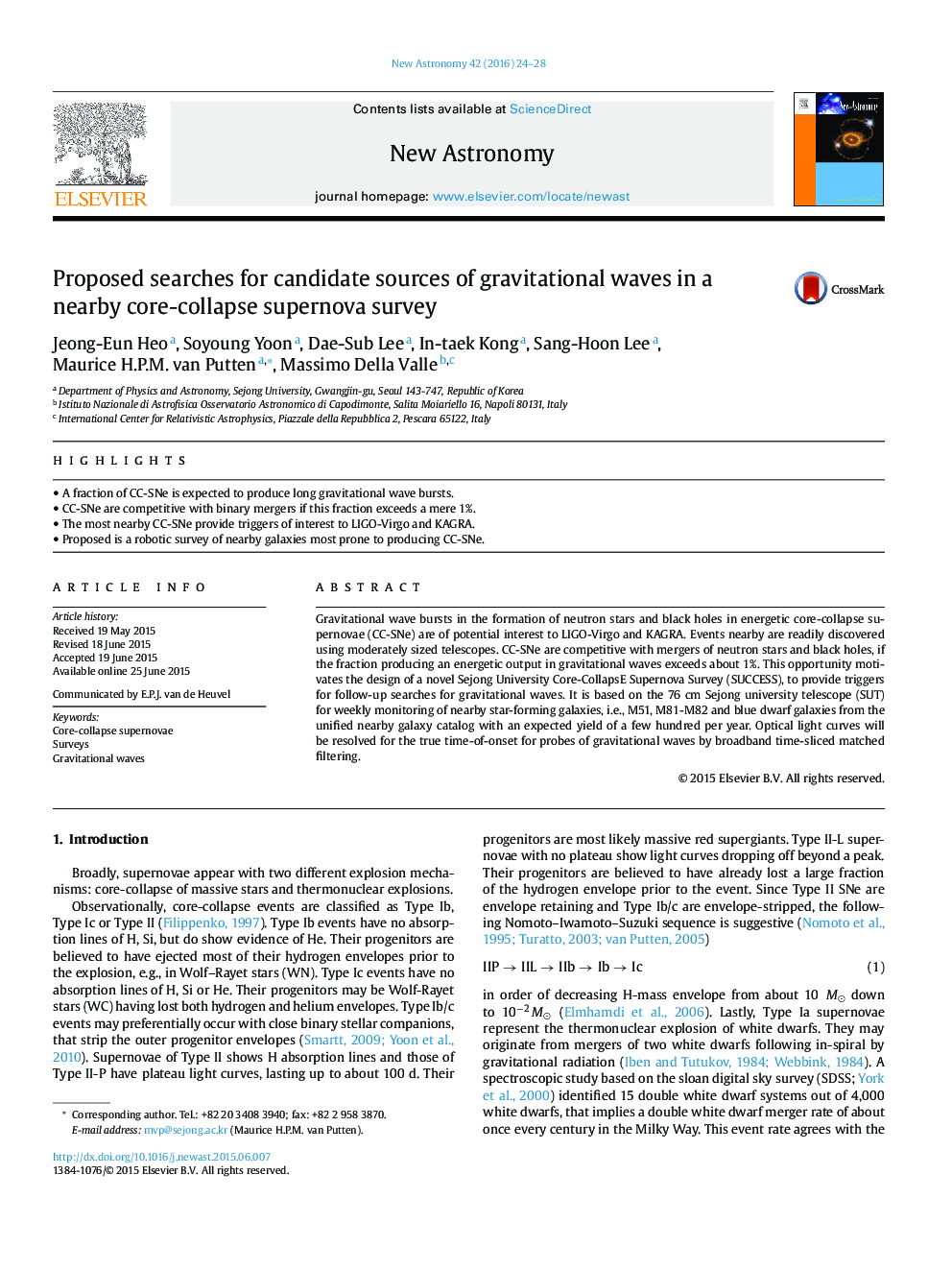| Article ID | Journal | Published Year | Pages | File Type |
|---|---|---|---|---|
| 1778735 | New Astronomy | 2016 | 5 Pages |
•A fraction of CC-SNe is expected to produce long gravitational wave bursts.•CC-SNe are competitive with binary mergers if this fraction exceeds a mere 1%.•The most nearby CC-SNe provide triggers of interest to LIGO-Virgo and KAGRA.•Proposed is a robotic survey of nearby galaxies most prone to producing CC-SNe.
Gravitational wave bursts in the formation of neutron stars and black holes in energetic core-collapse supernovae (CC-SNe) are of potential interest to LIGO-Virgo and KAGRA. Events nearby are readily discovered using moderately sized telescopes. CC-SNe are competitive with mergers of neutron stars and black holes, if the fraction producing an energetic output in gravitational waves exceeds about 1%. This opportunity motivates the design of a novel Sejong University Core-CollapsE Supernova Survey (SUCCESS), to provide triggers for follow-up searches for gravitational waves. It is based on the 76 cm Sejong university telescope (SUT) for weekly monitoring of nearby star-forming galaxies, i.e., M51, M81-M82 and blue dwarf galaxies from the unified nearby galaxy catalog with an expected yield of a few hundred per year. Optical light curves will be resolved for the true time-of-onset for probes of gravitational waves by broadband time-sliced matched filtering.
